Uncategorized
Dyno Testing BorgWarner 480SXE vs Power Driven Aggressor 480
Today we’ve got Will’s Junker drag truck as our test platform for a couple of turbos. We’re going to test the $2,200 BorgWarner 480SXE turbo versus the much less expensive Power Driven Aggressor 480. Let’s see how these two turbos compare to one another and find out which one makes sense for your set up.

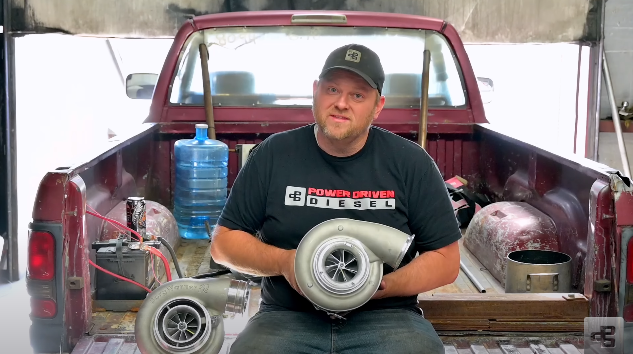
Comparing the BorgWarner 480SXE to the Power Driven 480 Turbo
There are a couple of major differences between these two turbos. The Power Driven 480 uses a modern billet wheel and has a much smaller scroll to better fit into your engine bay. There is also a significant size difference. The Borg Warner 480SXE is about ¾” bigger than the Aggressor 480. That might not seem like much, but it makes a difference when you are working in the confined spaces of an engine bay.
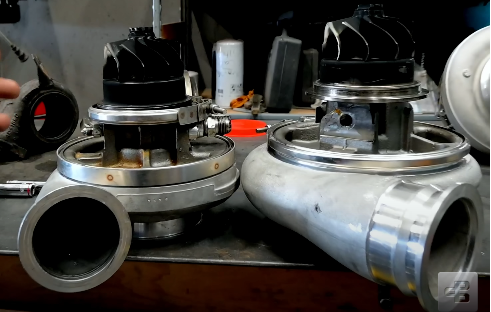
The Junker Drag Test Rig
If you’re not familiar with the Junker Drag truck, the goal of this truck was to make as much horsepower as possible as cheaply as possible. It’s gone through a number of builds and iterations over the years. Right now we have a 5.9 Cummins with a Power Driven Stage 2 head, new head bolts, rod bolts, a mild cam, and Mishimoto intercooler. It is a solid 900-1,000hp build.
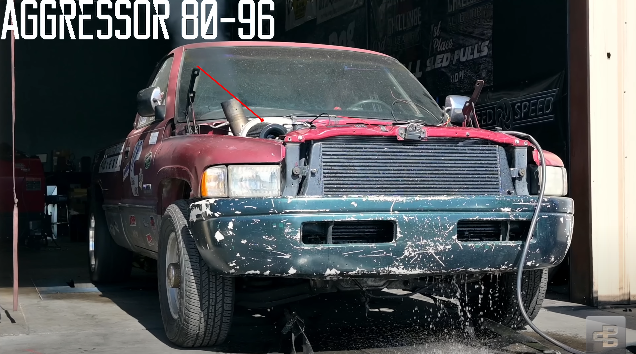
Testing the Power Driven Aggressor 480
After several runs on the dyno with the Power Driven Aggressor 480 we are getting a baseline in the mid 960hp range. Right in the range of what we expected with this build.
Dyno Testing the BorgWarner 480SXE
After swapping in the 480SXE and our first dyno run, the Junker Drag truck turned out 960hp. After a couple more runs, we saw baseline power numbers between 960hp and 964hp. These two turbos are delivering nearly identical numbers.
Tow Testing the BorgWarner 480SXE and Aggressor 480
After baseline testing these two turbos, we did a weighted run to simulate towing a trailer up a grade. After swapping turbos and simulating the same run on each turbo we again saw the horsepower numbers matching almost exactly.
Analyzing the Dyno Data
Horsepower and Torque
Horsepower is nearly identical between these two turbos. However, torque comes up a little bit faster, makes peak torque a little bit sooner and then fades off towards the end of the run. This is textbook performance for this turbo. The 11-blade wheel on the BorgWarner 480SXE does better at harnessing and applying the energy of lower incoming air speeds. Conversely, the 7-plus-7 wheel in the Aggressor turbo doesn’t quite perform as well at lower air speeds.
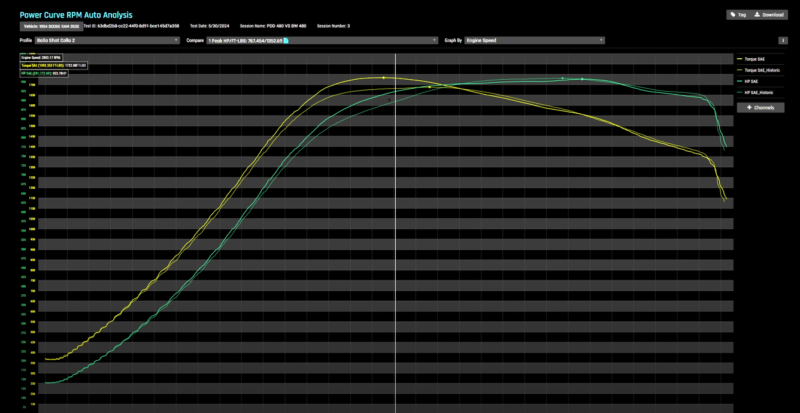
Boost and Drive Pressure
On the graph below, the blue lines represent the boost numbers and the red lines are drive pressure. You can see that boost and drive pressure come up together a little quicker for the BorgWarner turbo. However, the Power Driven Aggressor turbo holds the boost just a little better over the run
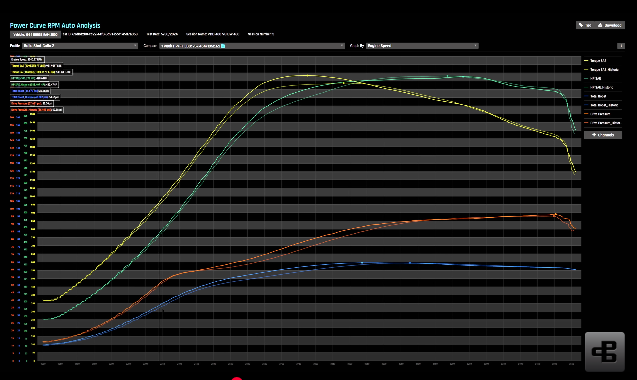
Interstage Drive and Boost
You can see from the graphs that the Borg Warner 480, with that 10 blade wheel, is really getting the kick in the pants early which is why it’s able to make peak torque earlier. It’s actually kind of deceiving further in the run, because it doesn’t look like it’s choking normally when a charger chokes dry, pressure is going up two-to-one, where you’ll get a six lb boost increase but you’re getting a 12lb drive increase. This doesn’t show it, but that extra restriction in the interstage drive or in the hot pipe seems to be causing restrictions in the manifold as well. Even though it’s making more boost to compensate it just doesn’t seem to be penciling out. This is pretty interesting, when you’re looking at interstage boost it almost always peaks right here at the end of the run.
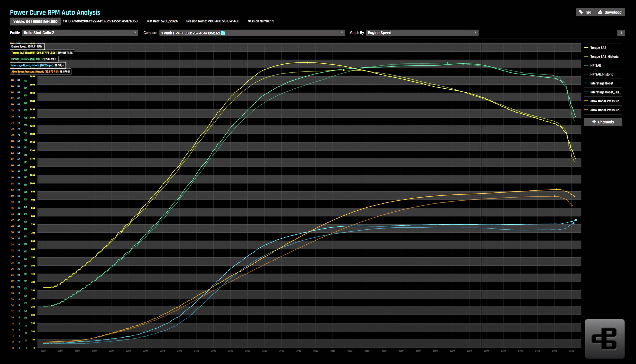
Exhaust Gas Temperatures
Measuring EGTs is extremely difficult. We started the runs with a 12 degree difference in EGTs, and the Borg Warner turbo appears to hold just a little cooler for a little longer, but overall these turbos are basically the same.
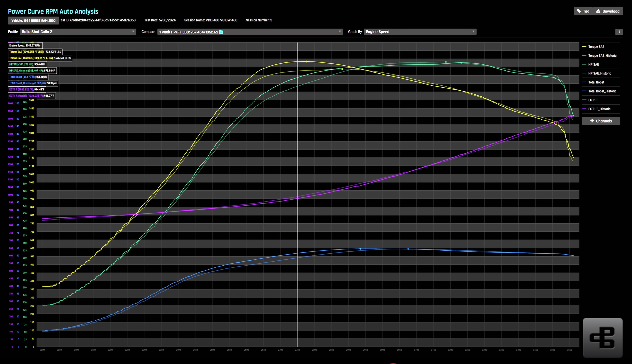
Simulated Towing Runs
We use this to simulate a 30 second trailer towing run. In this run you can see that power and torque are nearly identical for the two in this run (the differences you see at the end of the run is due to heat soak and the length of the run). However, from these first numbers it appears that the BorgWarner turbo is a little better in the towing run with slight advantages early on and late in the run.
Something else of note is that both of these setups saw cooling midway throug the run. That indicates that either of these setups are good towing builds that help to keep the EGTs down through heavy load runs. Again, the BorgWarner 480 has a slight advantage over the Aggressor 480.
BorgWarner 480SXE vs Aggressor 480 Conclusion
Overall the BorgWarner seems to have an advantage in this setup. It creates slightly more horsepower and torque throughout the runs. However, it is also a more expensive unit. If budget is no issue, the BorgWarner 480SXE may be the better option. However, if you are more budget conscious, the PDD Aggressor 480 was only slightly lower in performance, but at half the price.
It’s also important to consider your engine and goals. If you have a 5.9l Cummins, we probably wouldn’t pick either of those chargers for towing. The setup is going to be a little hotter, a little smokier, and a little slower to respond. You should be able to tow at 1700-1800 RPM pretty reasonably and still be able to maintain good control, and a 480 is just a little bit too much of a charger to achieve. But if you’re trying to go for 1,000 horsepower, these are really awesome setups and it’s hard to beat. The 351 responds really really well and that 480 carries it out really really well, creating a well matched setup.
If you have a 6.7L engine, realistically either charger would be great.
Finally, consider how each of these will fit in your engine and how that will impact working on your engine. What has to be removed, moved, and modified to fit the big BorgWarner turbo into the engine bay. We love the PDD turbo because it makes working on the engine easier and less of a headache.
Contact Us With Questions
Our team is here to help you find the best turbo and parts for your truck. Give us a call or text today to discuss which of these turbos, or any of our other available turbos would be best for your build. Give us a call at 435-962-9555 or text us at 435-962-9506 or leave us a comment below. Don’t forget to follow us on YouTube, Facebook, and Instagram for more product tests. Leave us a comment below about what you’d like us to cover next.
